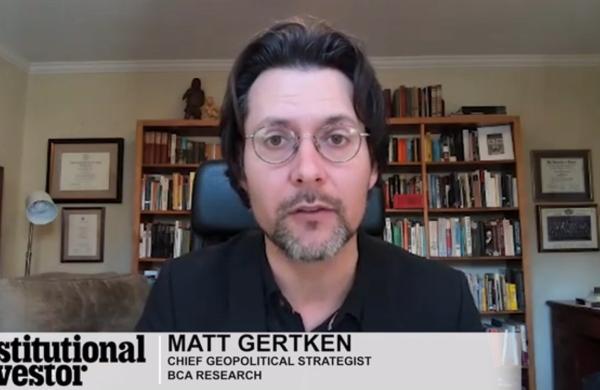With interest rates in the U.S. starting to rise from historical lows, institutional cash managers have begun to introduce new funds and new classes within funds. But, as always, their fees remain extremely low -- typically, between zero and 25 basis points -- so economies of scale are as critical as ever. John Winters, president of Westborough, Massachusetts based consulting firm Cash Strategies, estimates that institutional cash managers can hit operating margins of 30 percent, but only if they amass assets of at least $1.5 billion.
Unsurprisingly, with 171 players in the market, some of them huge, many cash managers have begun to acquire their competitors to bulk up and achieve those vital economies of scale. Or else they're heading toward the exit. "There are far too many players for such a commodity product," says Winters.
Nevertheless, that stark fact has been easy to overlook. Because money market yields did not drop as quickly as interest rates in 2001 and 2002, when the U.S. Federal Reserve Board knocked 600 basis points off rates in an 18-month period, investors could for a while take advantage of a positive arbitrage in money funds. The upshot: a 50 percent increase in institutional money market assets in 2001 alone.
"Corporate treasurers were borrowing to invest in money funds during those years -- they were the greatest game in town," says Winters. Even after the yield disparity disappeared, treasurers, accustomed to money funds, left their cash in place. The median cash balance of the companies in the Standard & Poor's 500 index has been steadily rising, reaching $550 million by November 30, 2004, up from $490 million a year earlier. And a recent survey by Chicago-based consulting firm Treasury Strategies found that 36 percent of corporate cash is invested in money market funds, compared with 10 percent in 1999.
Hoping to tap into this calm pool of money -- and to capture assets from smaller rivals departing the business -- leading asset managers, including Federated Investors, Lehman Brothers, Barclays Global Investors and Morgan Stanley Investment Management, have launched new institutional money funds in the past 12 months. Many are enhanced money market funds, whose underlying investments are floating-rate notes or notes with maturities of longer than 60 days, versus overnight-to-30-day maturities for traditional money funds.
Enhanced money market funds started cropping up in the mid-1990s, with a profusion appearing in the past two years. A typical enhanced fund was yielding 2.7 percent in mid-February, compared with 2.5 percent for a conventional institutional money fund.
The European market in corporate cash presents attractive prospects as well. Available in significant numbers only since the mid-1990s, European institutional money funds claim assets of just $60 billion; by contrast, the U.S. institutional money fund market is $1 trillion.
"The European institutional cash market is poised to grow just as the U.S. market did starting about 15 years ago," contends Cathryn Gregg, who heads the financial institutions practice at Treasury Strategies. Increasingly, multinational corporations demand the convenience of euro-denominated money funds. Michael Karpik, London-based director of the U.S. and global cash group at State Street Global Advisors, says, "It's far from where the U.S. is in absolute size, but the European marketplace looks like it could be as big or bigger than the U.S." The Institutional Money Market Funds Association predicts that Europe's money funds will have more than $1 trillion in assets in five to ten years.
But obstacles loom. Europe does not have a money fund regulatory structure comparable to Rule 2a-7 of the U.S.'s Investment Company Act of 1940, which dictates the levels of risk and the mix of bond maturities for money funds. In the absence of such a regime, European institutional investors must rely on rating agencies' assessments of these funds.
Furthermore, under Basel I, the Europe-wide capital accords, European banks must maintain 100 percent of money funds' value in reserve -- just as much as for equity funds. As regulators put together the new rules for Basel II, which will take effect in December 2006, European bankers are hoping to ease these capital requirements. "Under Basel II we are trying to get more-favorable risk ratings for money funds," notes State Street's Karpik.
Even though corporate treasurers on both sides of the Atlantic are turning out to be the top customers for cash managers -- in the U.S., companies account for 80 percent of all institutional cash assets -- the industry is hardly likely to escape further consolidation, especially in the U.S.
A few treasurers have started moving their cash out of money funds because the yields lag those available elsewhere. "Since mid-2004, when the Fed started to increase rates, we've been reducing our investment in money market funds, switching into direct instruments," says Richard Lee, assistant treasurer for banking and money markets at ChevronTexaco Corp.
The top ten U.S. institutional money market managers account for about 65 percent of all cash under management, up from 50 percent in 1995, according to Cash Strategies' Winters. He estimates that of the 161 cash managers that rank below the top ten, 84 have less than $1 billion in assets.
"Scale is the key to profitability," says James Kase, who heads Merrill Lynch Investment Managers' institutional cash business for the Americas. "For that reason, the top ten players' market share is bound to grow."
Occasionally, it grows overnight. In October 2004, Federated, with almost 9 percent of the U.S. market, bought Alliance Capital Management's short-term assets -- some $29 billion -- for nearly $100 million; Federated now controls almost 10 percent of the market. And in late January, BlackRock closed on some $52 billion in mutual fund assets from State Street Research & Management Co., including an institutional money market fund.





